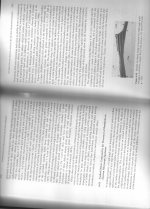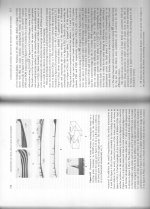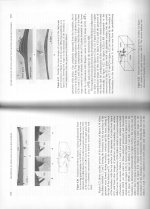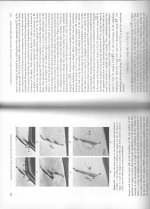I see your point . But it raises the question if the cap was in fact perfect then it is no longer so when it changed and the anal persuit is yet again foiled thou that fact have not been found that out . Maybe knowing what matters and what does not is the question .
Yep, sometimes I'll be listening to something I've heard 100 times and suddenly I'll really hear something in a song I've not understood before. Well, maybe it's because I've just had 3 cups of coffee and now my blood pressure is higher and my hearing is more accute. Or maybe it's because the humidity in the room is 30% and the high frequencies are bouncing off the wall with less attenuation.
It's certainly not because my amp coupling caps have finally, "broken-in."
Last edited:
Bob:
Electrolytics have their dielectric (aluminium oxide) formed and maintained by electrolysis - a small DC current which to us is an annoying leakage current. This oxide degrades with time, but the leakage current when in use rebuilds it. No corresponding phenomenon exists for film caps - they use completely different technology.
You may have missed my point. I am aware of things like using magnetic vs. non-magnetic leads and such. That is not what I am proposing - though the principle is at the heart of my suggestion. If a substance used in a cap has the ability to transfer a current, it has the ability to be effected by that current. Paper, plastic, wood, celery
The accumulated residual realignment (electron movement) of those current passing compounds might indeed result in what is called "burn-in".
Last edited:
May a switch to to tea will give smoother results . You know a more mellow sound.Yep, sometimes I'll be listening to something I've heard 100 times and suddenly I'll really hear something in a song I've not understood before. Well, maybe it's because I've just had 3 cups of coffee and now my blood pressure is higher and my hearing is more accute. Or maybe it's because the humidity in the room is 30% and the high frequencies are bouncing off the wall with less attenuation.
It's certainly not because my amp coupling caps have finally, "broken-in."
Well, I'm really glad that cap break-in is a myth. Of course, I don't use caps for coupling, but I still have caps in the power supply, mostly electrolytics. People keep telling me that my best amp takes many hours sound its best. I tend to blame the electrolytics (very very expensive electrolytics) for this, but what do I know? '-)
May a switch to to tea will give smoother results . You know a more mellow sound.




 Heeeeheee...
Heeeeheee...Or moving to a new "state of freedom" like Washington state, would make our amps sound better.
20
Well, I'm really glad that cap break-in is a myth.
You may want to re-read the thread a little more carefully. Granted that you don't use many electrolytic, paper, or Mylar caps, but you ought to at least be aware of their issues regarding hydrophilicity.
If a substance used in a cap has the ability to transfer a current, it has the ability to be effected by that current. Paper, plastic, wood, celery..... do not allow retention of any major change from the influence of electricity. A/any substance such as those used in the construction of a cap have the potential to retain the molecular reorganization most likely imposed by a current that passes through it.
The accumulated residual realignment (electron movement) of those current passing compounds might indeed result in what is called "burn-in".
I'm sorry, but that's gibberish. Electrons don't "pass through" dielectrics, and they can pass through metals virtually forever without changing "residual realignment" or "molecular reorganization" or whatever except in cases where you're heating things (see my earlier multiple comments about water in dielectrics).
Perhaps, as you might have read multiple times in this thread (or not, but it was there), they need a few seconds to form. I assumed that you knew that, but perhaps that was a bad assumption on my part.
I have a hard time believing that your design is so incompetent that it doesn't sound transparent after a few minutes.
I have a hard time believing that your design is so incompetent that it doesn't sound transparent after a few minutes.
Na the weather better in the South . Too too much rain and no sun shine in Washington they need the "freedom " couch couch to cope.Heeeeheee...
Or moving to a new "state of freedom" like Washington state, would make our amps sound better.
20
Are they air shipped or sea shipped ?Gee, my power electrolytic caps cost $55ea and they come from Japan. Do you think they might be 'waterlogged' and that is why it takes many days for the amp to sound its best?
OK. A note from Epcos suggests that leakage is down to its long-term value within 25 minutes. Most datasheets specify that it is within spec within 5-10 mins. It should be small within a much shorter time (5-10 seconds? - my estimate), except when the equipment has not been used for some years.AndrewT said:Electrolytics do NOT settle in a few seconds. The leakage measurably changes over many minutes and even hours. and changes again after being switched off and changes depending on whether when OFF they are fully discharged, or hold charge.
If bias voltages have not settled down, then active devices are likely to be much more disturbed than film caps. Good circuit design will reduce any effects.
Anyway, this is a side-issue: equipment 'warm-up' and component 'break-in' are not the same.
Dielectrics for film caps are carefully chosen precisely because they do not pass current, as well as for other properties. Even if they did pass current, it does not follow that they would be permanently changed by that current; resistors do not seem to be, but they pass much more current than a cap. 'Molecular reorganisation' is not necessarily a consequence of passing a current; I would regard it as rare. 'Magnetic leads' is a separate (non?)-issue.bcmbob said:You may have missed my point. I am aware of things like using magnetic vs. non-magnetic leads and such. That is not what I am proposing - though the principle is at the heart of my suggestion. If a substance used in a cap has the ability to transfer a current, it has the ability to be effected by that current. Paper, plastic, wood, celery ..... do not allow retention of any major change from the influence of electricity. A/any substance such as those used in the construction of a cap have the potential to retain the molecular reorganization most likely imposed by a current that passes through it.
The accumulated residual realignment (electron movement) of those current passing compounds might indeed result in what is called "burn-in".
Gee, my power electrolytic caps cost $55ea and they come from Japan. Do you think they might be 'waterlogged' and that is why it takes many days for the amp to sound its best?
Nope. The more expensive the part, the long it takes for it to break-in.
It's the vested interest that creates the break-in period. For those of us who spend $2.fitty, we get to listen to our music right away and enjoy it because it ain't gonna get no better.
20
I'm sorry, but that's gibberish. Electrons don't "pass through" dielectrics, and they can pass through metals virtually forever without changing "residual realignment" or "molecular reorganization" or whatever except in cases where you're heating things (see my earlier multiple comments about water in dielectrics).
I'm certainly no physicist nor metallurgist, but the telephone dude just replaced all the wires from the box 500 ft. away, to the pole in the backyard, to the box on my house, stating what he replaced had been installed in the late 50s. I know there is cable even much older that is still functioning. Be it from dielectric decomposition or changes in the metal itself (same as in caps) - the signal strength and clarity improved with the new stuff.
Maybe what is needed in this quest/discussion now becomes a microscope rather than an oscilloscope.
I think rain caused more problems than electrons to your telephone wire.
Bingo. Weathering is nasty stuff. Sunlight is even worse that rain for insulation. Best to keep your capacitors tightly rolled and indoors.
Of course it sounded better... You now have a telephone connection with newly made connections rather than heavily oxidised ones; new cable insulation, rather than damaged, cracked, perhaps with water damage and possible water retention leading to high leakage; corrosion from bird droppings; UV exposure damaging the insulation; etc.I'm certainly no physicist nor metallurgist, but the telephone dude just replaced all the wires from the box 500 ft. away, to the pole in the backyard, to the box on my house, stating what he replaced had been installed in the late 50s. I know there is cable even much older that is still functioning. Be it from dielectric decomposition or changes in the metal itself (same as in caps) - the signal strength and clarity improved with the new stuff...
No, what would be interesting would be if after a series of phone calls to "break in" the cable, you could also detect an improvement in the quality of the signal. Of course, that won't happen. It will just carry on working until it degrades with age like the previous cable.
I have a simple question which has not been addressed:
what changes to a coupling capacitor would be audible?
My answers are:
1. huge increase in series resistance of the metal and/or significant increase in the audio loss tangent of the dielectric - in either case a small increase would not be noticeable.
2. huge change in capacitor value - if a small change is noticeable then the value was already too small anyway.
3. significant non-linearity, presumably in the dielectric - small non-linearity would not matter except in the LF rolloff setting capacitor.
4. high-Q mechanical resonance - a low-Q resonance would be easily spotted in a frequency-impedance curve - which somehow goes away after 'break-in'.
Would anyone like to suggest more possibilities? An explanation as to how these phenomena do not crop up in other applications of electronics would be useful too. Merely asserting without proof that audio is the most exacting application will not do.
I would guess that if there is a significant effect it will be at low signal levels. We are a model-making species and we're wired for linear models. We assume monotonicity by default, even while knowing that the real world isn't monotonic and that our models fail beyond some range of values.
Are we making the same error as when we measure amplifiers at full power even while knowing that in modern amplifiers crossover distortion is the real problem?
Thanks,
Chris
- Status
- This old topic is closed. If you want to reopen this topic, contact a moderator using the "Report Post" button.
- Home
- Amplifiers
- Tubes / Valves
- breaking in audio capacitors



